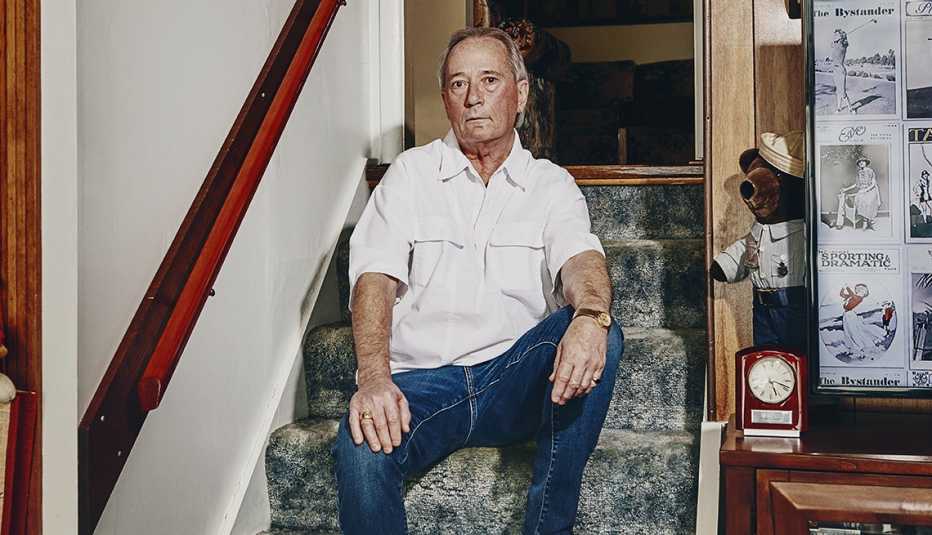Staying Fit


Here it is, the elixir of life!” Joan Mannick says, jokingly, as she drops a shiny, salmon-pink pill into my palm. It’s RTB101, a drug developed by Mannick’s Boston-based biotech company that could change the future of aging forever.
I feel a crazy urge to pop it into my mouth. Similar drugs have extended the lives of countless worms, fruit flies and mice by slowing down an ancient aging process. But unlike most other promising substances that have come and gone, this one has been shown to work in another notable species: humans.


AARP Membership— $12 for your first year when you sign up for Automatic Renewal
Get instant access to members-only products and hundreds of discounts, a free second membership, and a subscription to AARP the Magazine.
In studies of more than 900 people by Mannick and her team, RTB101 and drugs like it bolstered aging immune systems, cut risk for respiratory diseases and may have lowered the risk of urinary tract infections. A version of the RTB101 drug could win Food and Drug Administration (FDA) approval as early as 2021 for a single, age-related health threat: the winter colds, flu, pneumonia and other respiratory tract infections that send over 1 million older adults to the hospital every year and kill more than 75,000. Studies of the drug as a preventive for Parkinson's disease are set for later this year, with additional research looking into its effect in reducing heart failure being eyed for some time in the future.
In the suddenly hot world of aging science, RTB101 is an A-list celebrity. It's the biggest star in the current quest for a drug that extends the healthy lifespan, a quest aided by the National Institutes of Health's little-known, taxpayer-funded Interventions Testing Program (ITP). The ITP has been quietly experimenting with compounds thought to extend longevity in mice and worms at three major laboratories across the nation. One of the best-kept secrets in aging research, the $4.7 million-a-year ITP has also debunked some big antiaging crazes, including green tea, curcumin and resveratrol.
But RTB101 has shown real promise, as have other similar drugs. An unprecedented number of age-defying compounds from labs across the U.S. are now heading into human clinical trials for the first time.
"We've reached the perfect storm in aging science,” says physician Nir Barzilai, founding director of the Institute for Aging Research at Yeshiva University's Albert Einstein College of Medicine in the Bronx, New York. “Everything is happening. We have the foundation from decades of animal studies. We're ready to move on to people."
The ultimate goal: to put the brakes on aging itself — preventing the pileup of chronic health problems, dementia and frailty that slam most of us late in life. “I want 85 to be the new 65,” says Mannick, the chief medical officer and cofounder of resTORbio, the company developing RTB101.
Not longer life, but better life
The need is enormous. In a decade, nearly 1 in 5 Americans will be 65 or older. Three out of 4 will have two or more serious health conditions. At least 1 in 4 can expect memory lapses and fuzzy thinking, while 1 in 10 will develop dementia.
"Right now doctors play whack-a-mole with chronic diseases in older adults. You treat one, another pops up,” says Felipe Sierra, director of the National Institute on Aging's Division of Aging Biology. “The goal instead is to tackle aging itself, the major risk factor for almost every major disease."
While these drugs might also extend longevity, experts say that's a side effect, not the real goal. “People don't want to live longer,” notes S. Jay Olshansky, a professor of public health and a researcher on aging at the University of Chicago. “They want to stay out of the red zone — the years when health and quality of life decline drastically. A drug that slows the biological process of aging will be a medical revolution on par with the discovery of antibiotics. Whoever develops the first one will be very, very famous."
It's no wonder, then, that Mannick says, “I stayed up all night at my kitchen table, with a piece of paper, a pencil and the raw data” when she ran a 2012 study widely regarded as the first human aging trial. The results were thrilling. Older people who took RAD001, a similar drug to RTB101, had a stronger response to a flu vaccine. Their immune systems looked younger, with fewer exhausted T cells — a depressingly common feature of aging called immunosenescence. “This was the first evidence that if you target a pathway in humans, you may actually impact how we age."


Slender and dressed casually in a cotton skirt, tights and flats, Mannick tells me she's turning 60 soon. She views her own aging with cheery wonder. “I look in the mirror and think, Wow! My body is completely different now! It's kind of cool,” she says, chopping the air with her hands to emphasize her point.
An infectious disease specialist with a Harvard Medical School degree, she walks fast on a treadmill every day and generally follows a healthy diet — a habit fostered by her nutrition-conscious mom. Indeed, her personal passion for the science of aging grew as she watched her parents age. “They were raised in similar kinds of families in the Midwest and West. Both were college athletes, both went to Harvard Medical School and lived in the same environment for the decades of their marriage,” she says.
"But they have aged completely differently. Both are 90. My dad is robust and energetic. My mother is frail and has dementia. Our society, our drug companies and medical profession aren't addressing all this suffering that happens as people grow old. But the older people in my life are beloved to me. If we can do something about aging, we shouldn't ignore it."
In the winter of 2015, Ken Butterfield, 67, took a small pill every morning as part of a clinical trial run by resTORbio. The study tested the effects of several doses of RTB101, some mixed with a second drug, on respiratory infections in 652 adults 65 and older.
"I don't like getting sick,” says this retired mental health caseworker and commercial refrigeration installer from upstate New York. “The possibility of fewer winter colds was a selling point for me.” Swallowing an experimental drug didn't worry him. “I've been in clinical trials before, so I felt safe,” he adds. “My first was a smallpox vaccine booster study right after 9/11. There was a smallpox scare. I was too old to fight in the military and wanted to help people."
Butterfield and resTORbio don't know whether he took RTB101 or a placebo; the results are “blinded,” to curb bias. Statistically, though, those who took 10 milligrams of RTB101 daily had 31 percent fewer respiratory infections — including colds, flu, bronchitis and pneumonia. There were 52 percent fewer severe infections, too. Those with asthma fared even better, with 68 percent fewer infections. “Their antiviral defenses were turned up,” Mannick says.



































































More From AARP
Understanding Brain Health and Healthy Aging
Bob Edwards talks about memory lapses and when they indicate a more serious problem